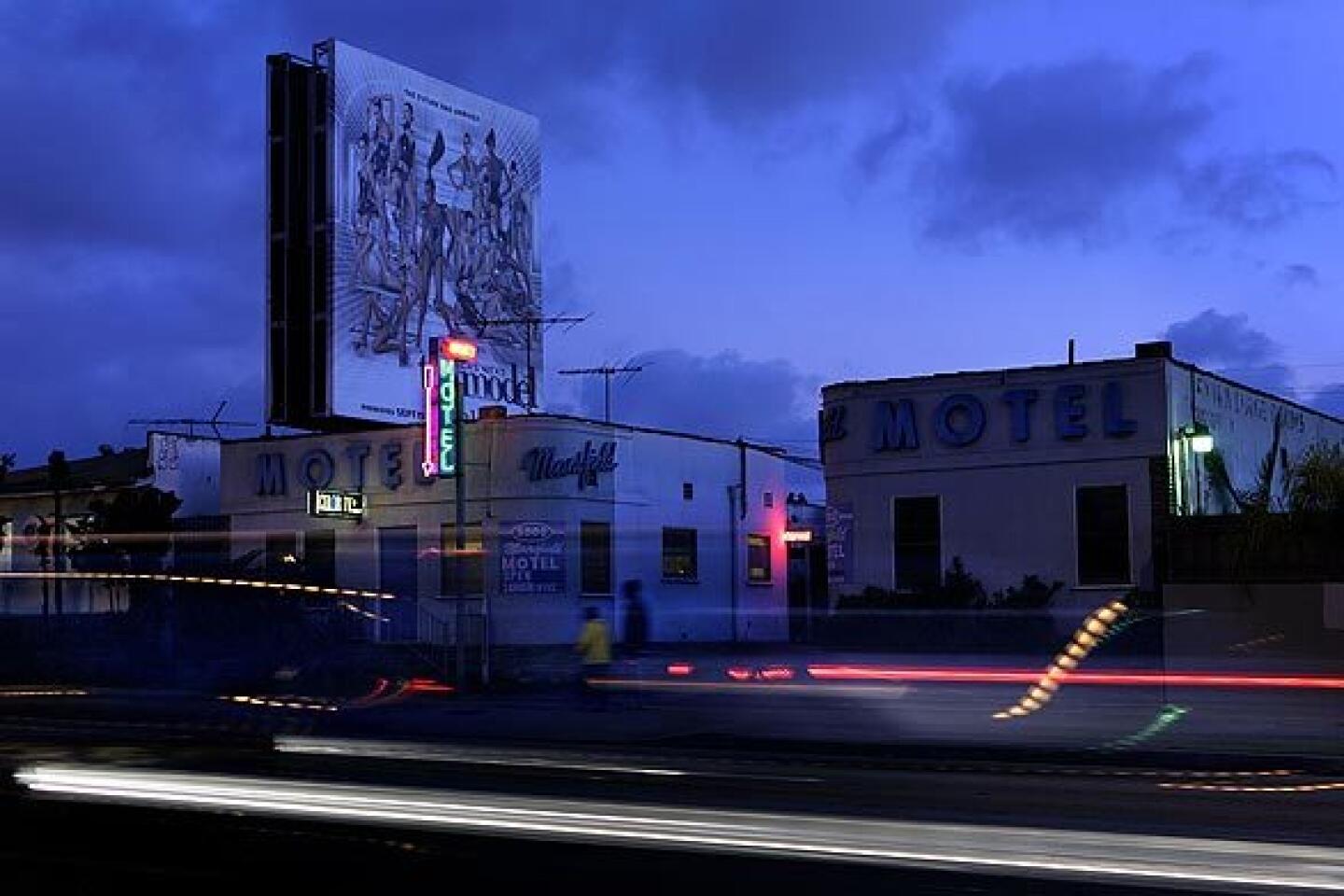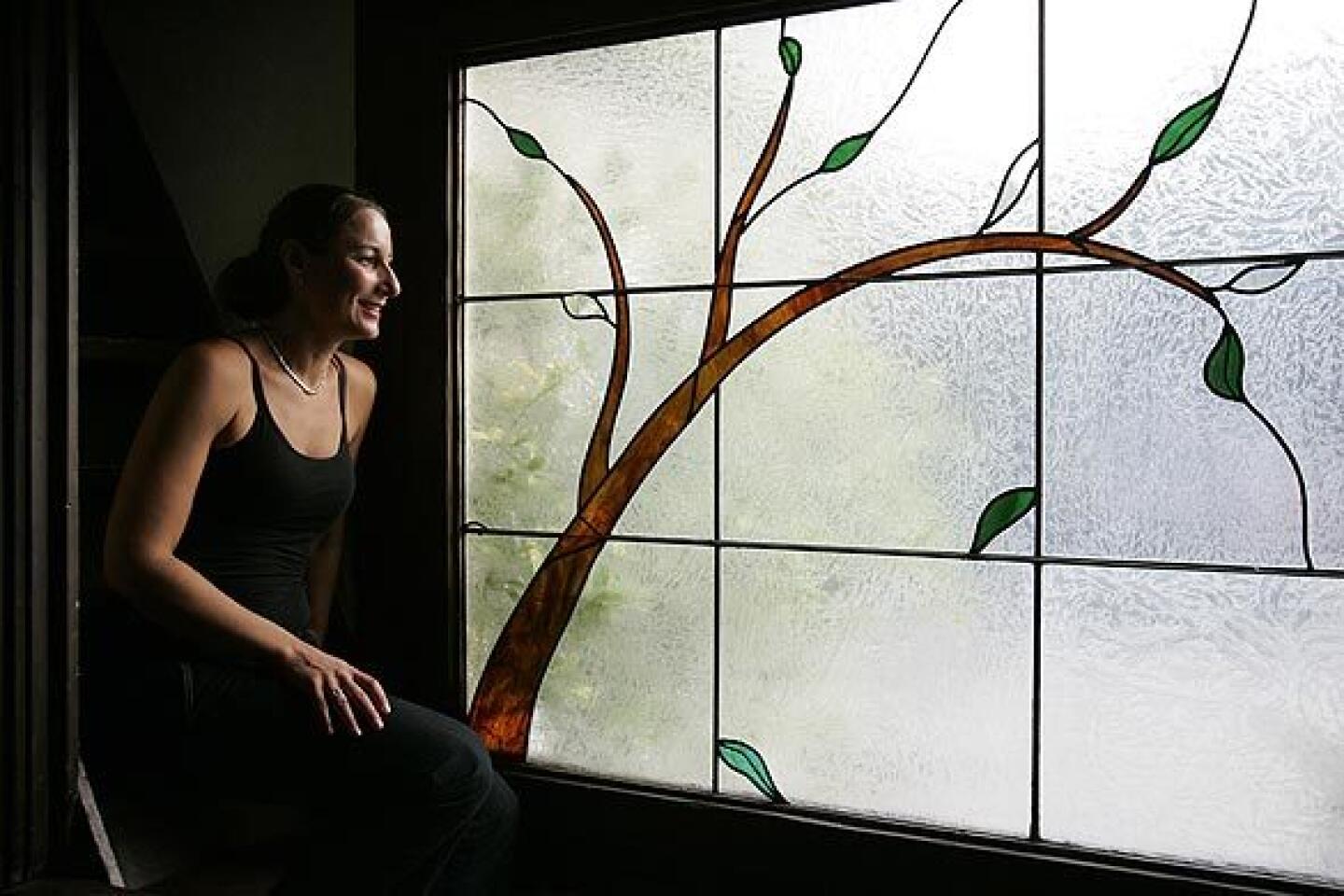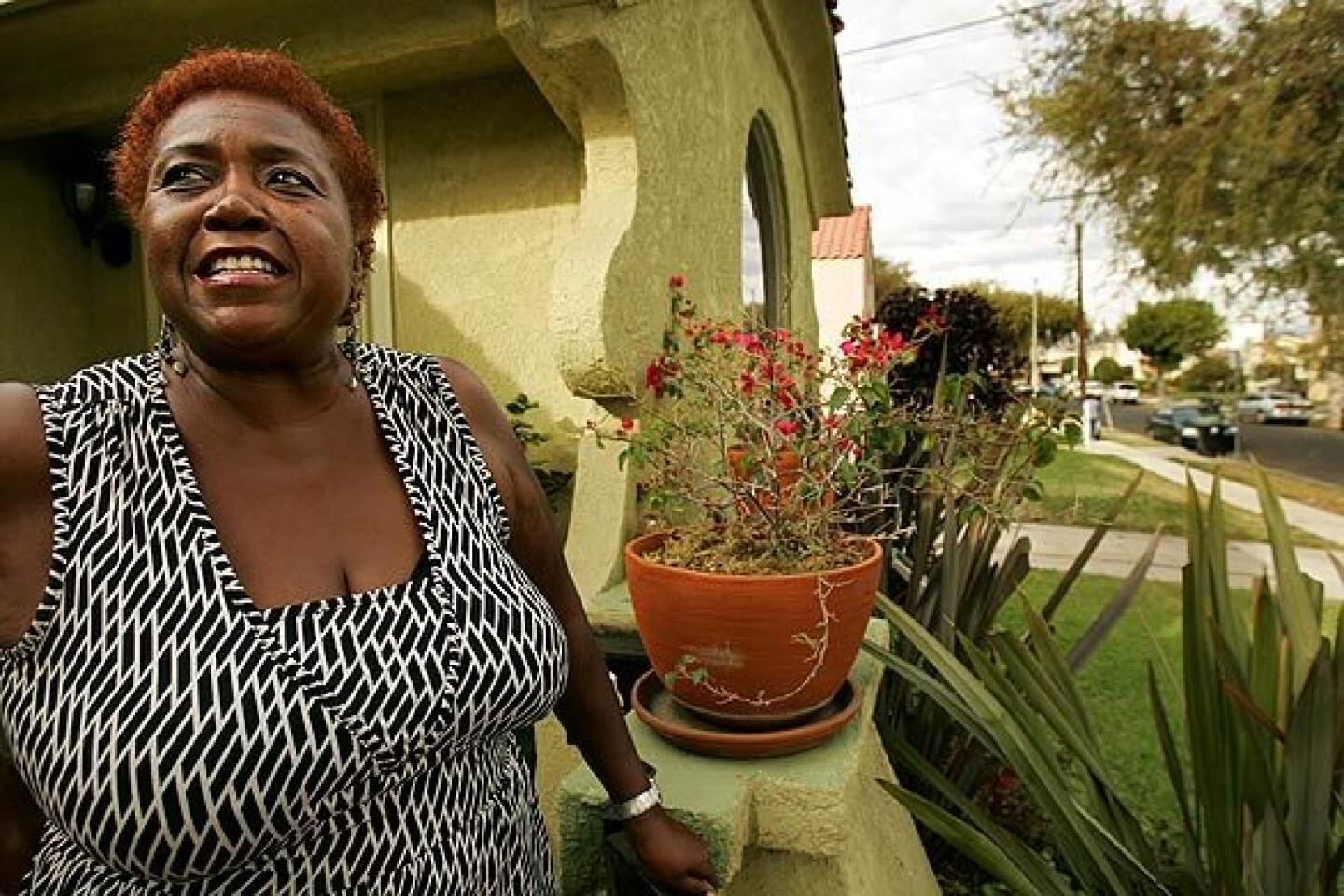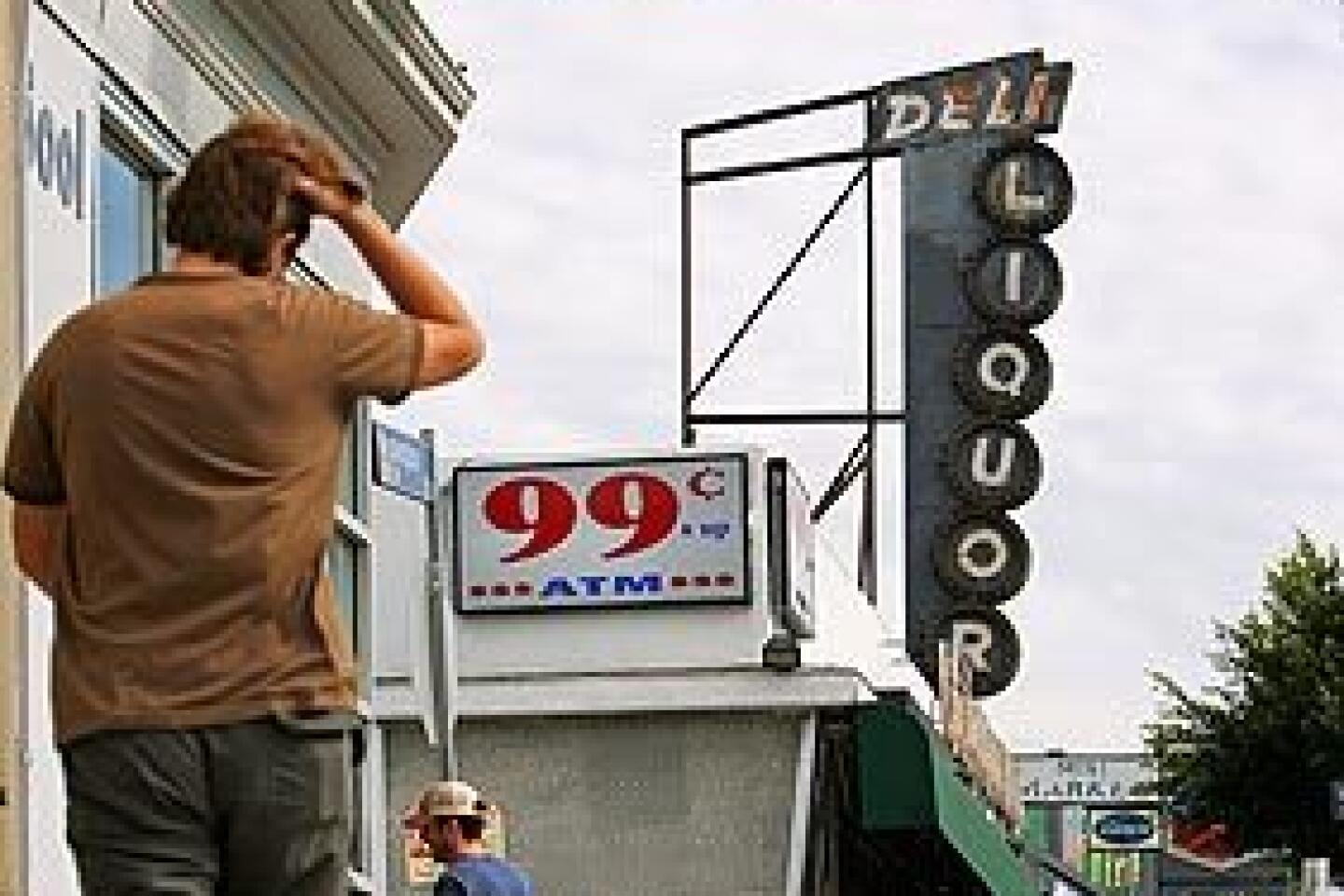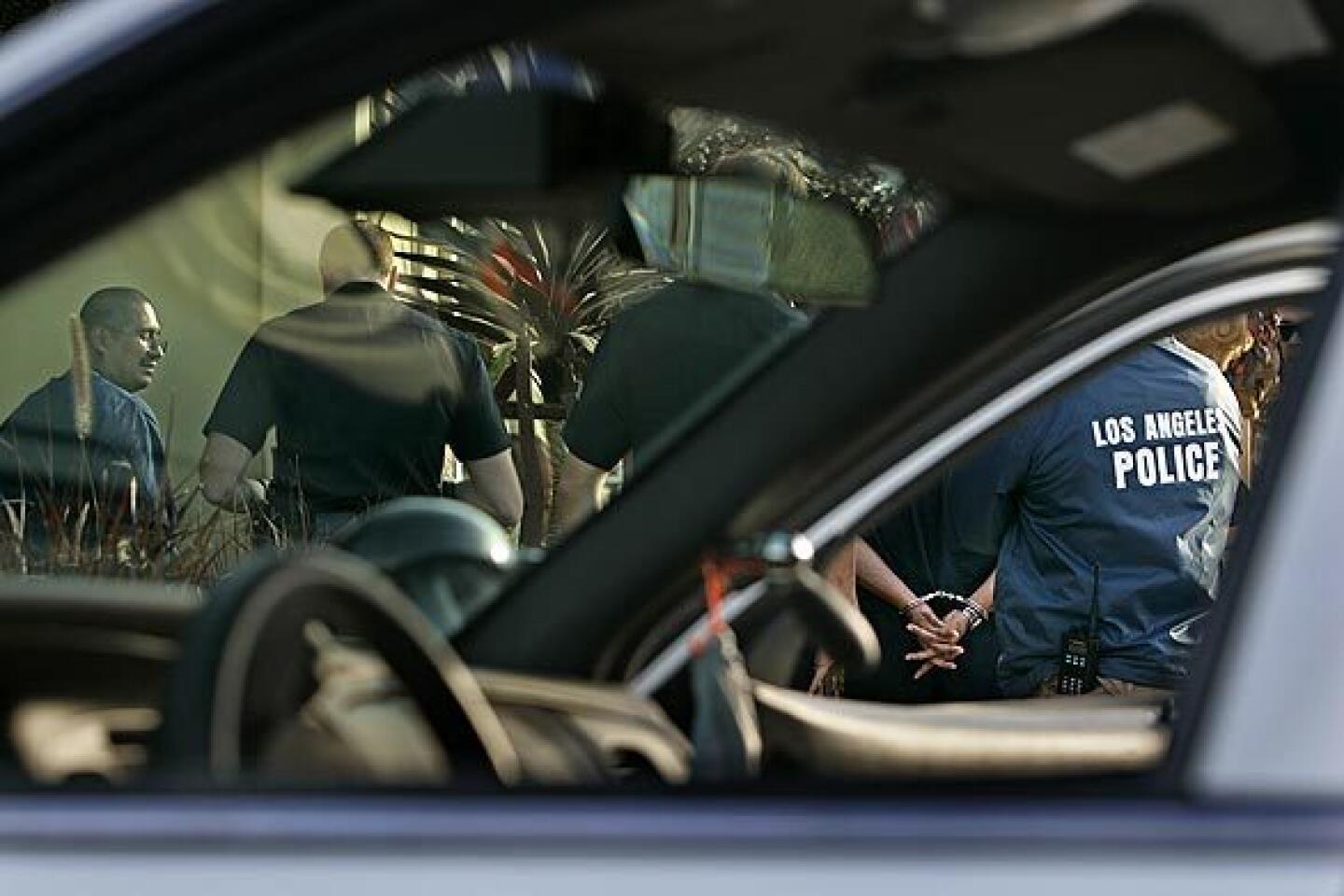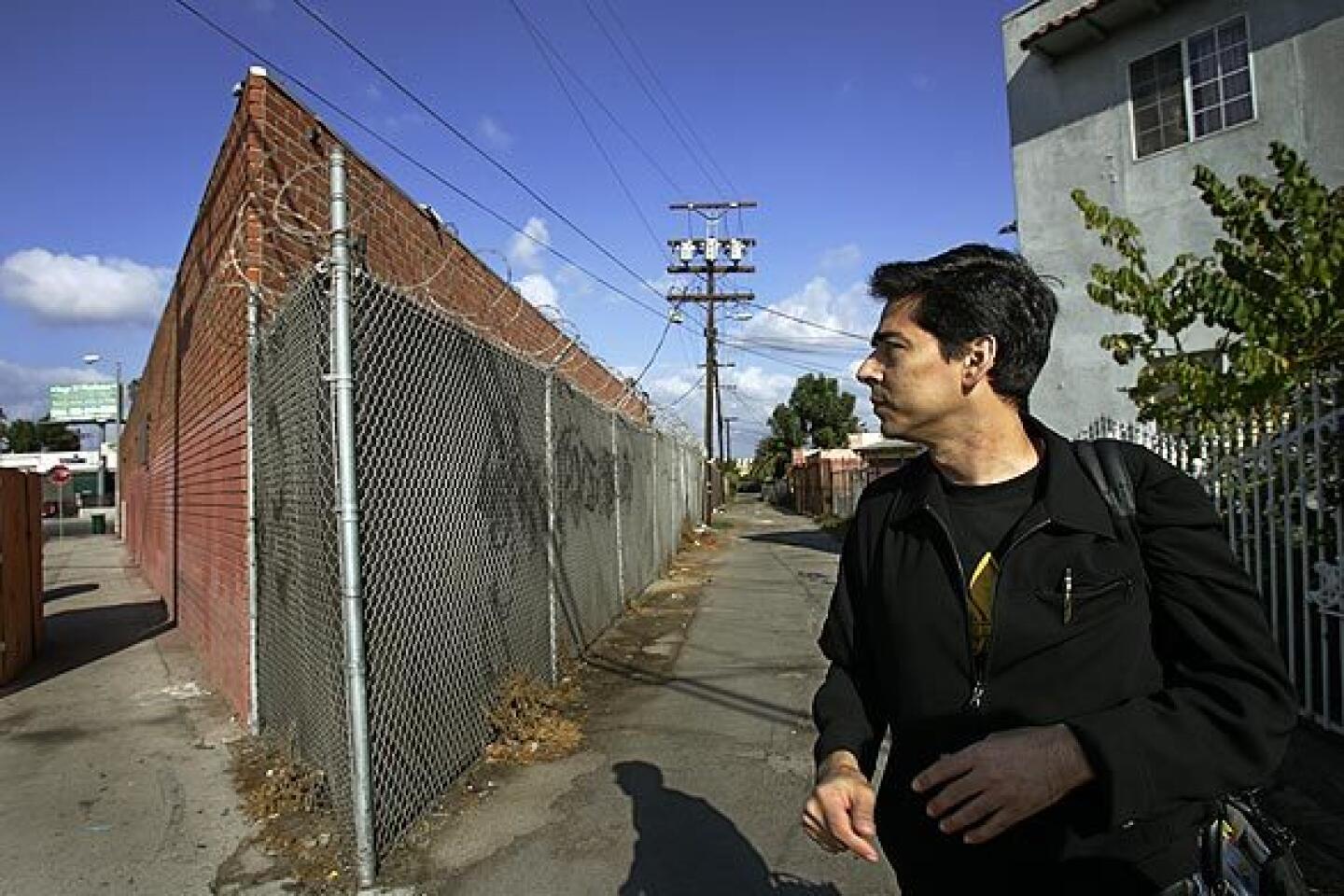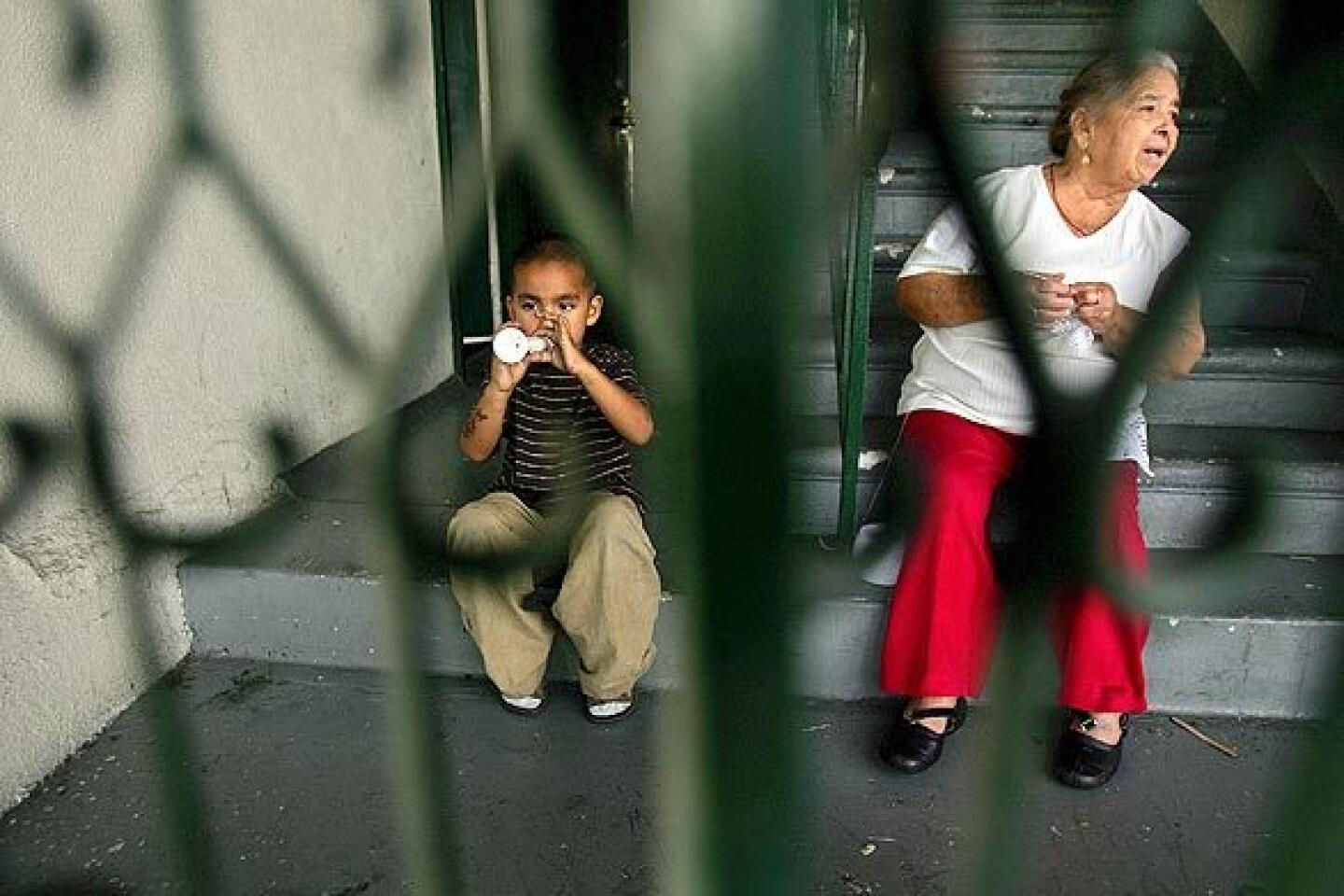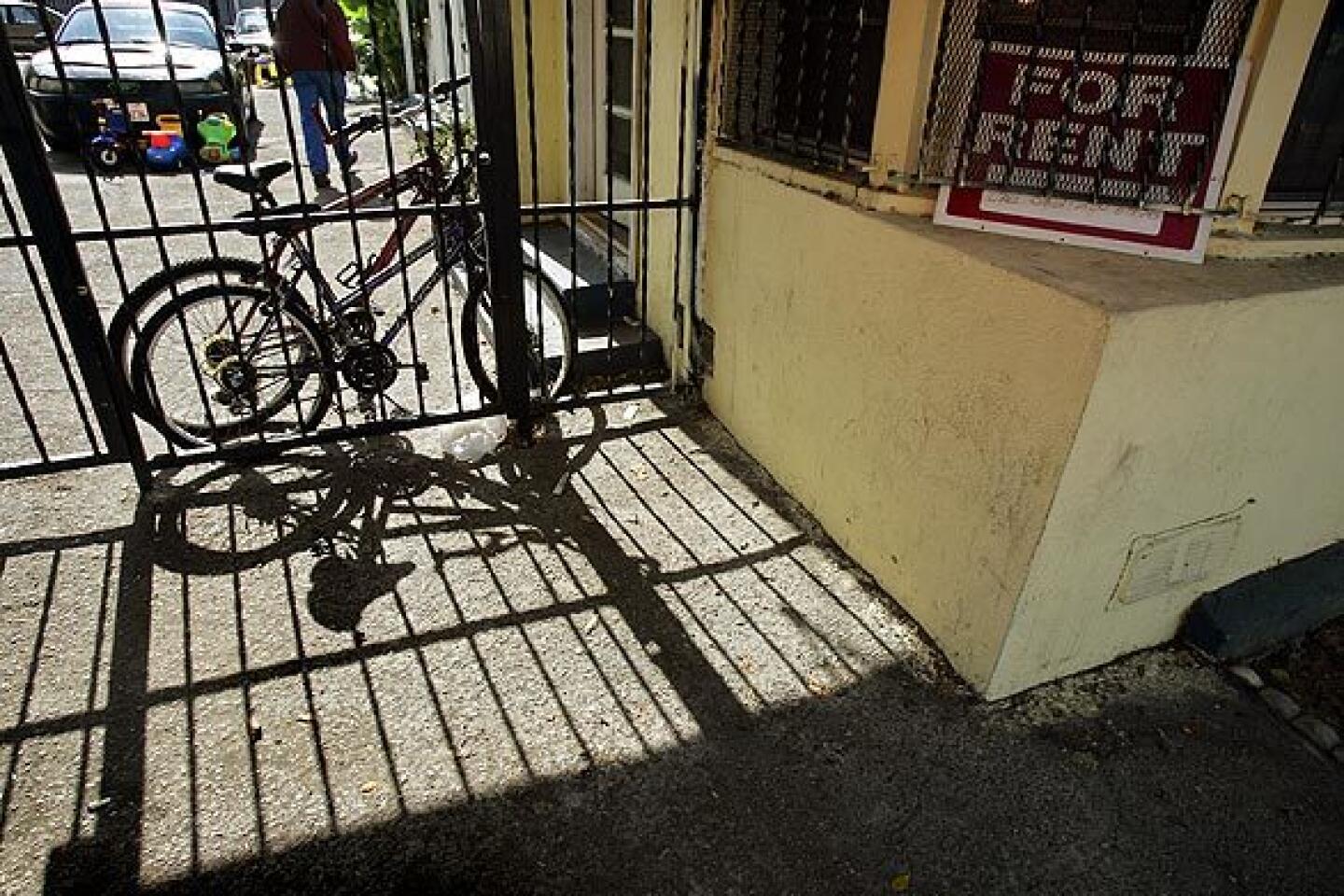Mid-City area attempts a makeover
Where to start?
With the transgender prostitutes who just moved into the cheap hotel down the street? With the taco vendors who are so indifferent to the law that they set up shop on the side of the road like a full-fledged restaurant, with tables and heat lamps? And what about the troubled old lady who stands at the gas station all day, slapping herself in the face, spitting on your shoes if you get too close?
On a recent Saturday morning, a dozen civic leaders from the Mid-City district of Los Angeles met over coffee and muffins to mull, and fret about, the Washington Boulevard corridor stretching roughly between Fairfax and La Brea avenues. Considering the corridor has degenerated at times into lawlessness, it was evident that progress has been made, that these leaders are no longer urban pioneers.
Crime has dropped. Volunteers have planted 77 shade trees along the boulevard. It was evident, too, in the venue they picked for their meeting -- the Atomic Cafe, a bright, hip, locally owned bistro that opened recently in the 5000 block of Washington, replacing a chicken joint where they used to lock the cashier inside a cage for safety.
There was no time, however, for resting on their laurels. It did not appear that there would be time for that sort of thing for quite a while.
Can anything be done, someone asked after a few minutes, about the sketchy characters outside the methadone clinic? When is the city going to remove more pay phones, because the only people who use them are drug dealers?
As the conversation ricocheted off the cafe’s concrete floor, the leaders passed around summaries of old police reports: “Three susps, two brandishing guns, enter business. Victs in fear fled.”
There were so many troublesome properties on the agenda that by the end, they were having a hard time discerning halfway houses from rehab clinics from run-of-the-mill flophouses. “Wait a second,” someone said when one property came up. “Is that the drug recovery place or the mentally ill place?”
Most striking was their vision for the future, which sounded a lot like L.A. neighborhoods that have been thoroughly gentrified: Los Feliz, Koreatown, Venice.
There was a time when this stretch of Washington would’ve been grateful for any hint of economic activity. That time, said Allan DiCastro, Mid-City Neighborhood Council president, has passed.
“No more liquor. No more motels. No more mental housing,” DiCastro said. Also out: bars, rehab clinics, check-cashing stores.
“We want a real bank and real restaurants,” he said. “We want antique stores. Boutiques.”
DiCastro passed around a letter he planned to send to a target of the group’s cleanup effort -- a corner store called Liquorama, whose very name hearkened to the gleeful sort of Bacchanalia that once took place here. The letter asked the owner to add security cameras and better lighting, and concluded:
“Mid-City’s Washington Corridor will evolve into a fashionable district of art galleries, shops and cafes.”
Really? Can this forlorn stretch of Washington, for so long an open marketplace offering just about everything bad for you, be transformed so completely? Is this the moment when gentrification in Los Angeles goes one step too far?
Hookers and horses. Yvonne Erwing-Davis was born here in 1947, and that’s what she remembers most about the old days -- when the cops would swing through to chase off the prostitutes.
“They used to come on horseback and run them right back into their hotel rooms,” she said. “It was better than TV.” She smiled, but only briefly. “The drugs and the prostitutes,” she said, “wore this neighborhood down to the dirt.”
By the 1990s, however, the corridor had something to offer again: it was centrally located, lined with quaint side streets of bungalows and Craftsman houses. And it was cheap. Newcomers arrived, with expectations. An era of activism got underway, slowly at first, then blossoming into the fever it is today.
Its face has become that of DiCastro, a financial analyst by trade, a Mid-City reformer by passion. DiCastro, 47, moved here in 1987 for the same reason many others did, because he could afford it. “I was kind of scared,” he said.
He began filing regular -- incessant, some at the local police precinct might call it -- complaints about graffiti. He documented every tag -- 180 incidents a week, at first, then 130, then 50. He’s still at it; it’s down to 15 a week.
He now leads a remarkable makeover campaign. Activists report peeling paint on the sides of businesses, potholes, damaged street signs and trees that need trimming. “So they don’t block the lights and so rats can’t get to the roofs,” DiCastro said.
They’ve raised money for banners identifying the neighborhood and repainted their own fire hydrants. They’ve harangued police into chasing off men selling bootlegged DVDs and gotten a crime-ridden store’s liquor license revoked.
“Do you know what my husband and I did last week? We went for a walk on the boulevard,” said Joy Williams, vice president of the Neighborhood Council and a resident since 1978. “We never walked the boulevard. Never.”
No one is more surprised than lifers such as Erwing-Davis, who has launched a new business selling single-sized servings of banana pudding and peach cobbler out of a gold-painted basket draped over her arm.
“Everybody wants to be proud of their neighborhood, right?” she said. She leaned in close. “I don’t mean to brag,” she said, nodding toward her basket. “But these things are good. The banana pudding is screaming.”
It only gets harder from here; the next step, beyond cleaning up the most evident problems in the neighborhood, is energizing its economy.
Redevelopment is buzzing all around them -- the Culver City Arts District to the west, the Midtown Crossing shopping center to the north, the Nate Holden Performing Arts Center to the east. But this stretch of Washington is still, by and large, $40-a-night hotels and auto repair shops, many protected by spirals of razor wire.
“People are still skeptical,” Williams said. “There is a cloud that hangs over the boulevard.”
DiCastro has begun trying to recruit new businesses and acknowledged that he has finally run into a wall. He gestured toward a carpet dealer as he walked by; the company, like some others here, keeps its doors locked even during business hours.
“You have to knock on the door and convince them that you are sane,” he said. “Then they will let you in.”
A closer look at the boulevard reveals a mosaic of poverty and crime that would seem to belie all the progress.
On a Friday night, Los Angeles Police Senior Lead Officer Adam Green rumbled through the neighborhood in his black-and-white cruiser. Green has spent nine of his 14 years on the force here. He is a pro; on one crime-ridden street he turned on his high beams so people would have a hard time seeing his lights and siren approaching.
Most of the area, he said, is the turf of the Mansfield gang, a Crip “set,” sort of like a subsidiary. On particularly worrisome streets, Green drove without a seat belt. He doesn’t like to do it, he said, but you never know when you’ll need to jump out. At Washington and Hauser boulevards, he pulled in front of a liquor store; six teenagers, all suspected gang members, were clustered in front. “Who you claiming?” he yelled at one boy, asking for his affiliation. “Mansfield?”
“I don’t even know what that is,” the boy said.
Green chuckled sarcastically. “Get out of here!” he yelled. “I got nothing else to do but take somebody to jail. You feel me?”
The boy nodded and moved on, and so did Officer Green.
“It’s not a bad neighborhood,” he said. “Just a few bad apples.”
Gold is a Times staff writer.
More to Read
Sign up for Essential California
The most important California stories and recommendations in your inbox every morning.
You may occasionally receive promotional content from the Los Angeles Times.
